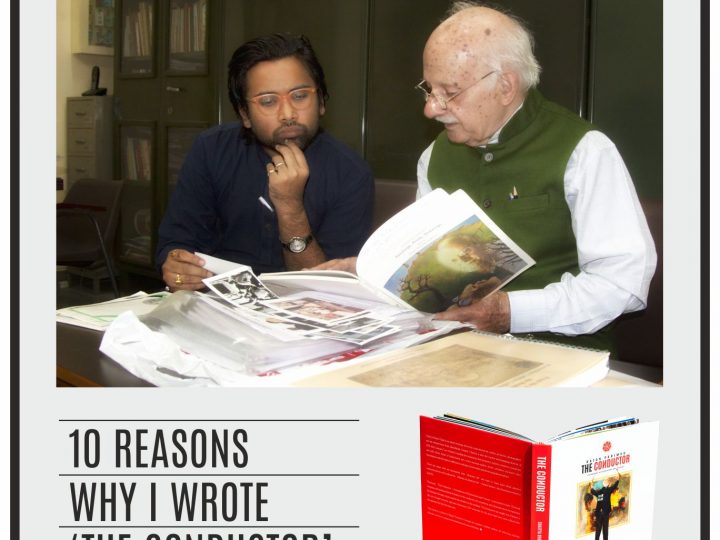Podcast
Vama by Rini Dhumal
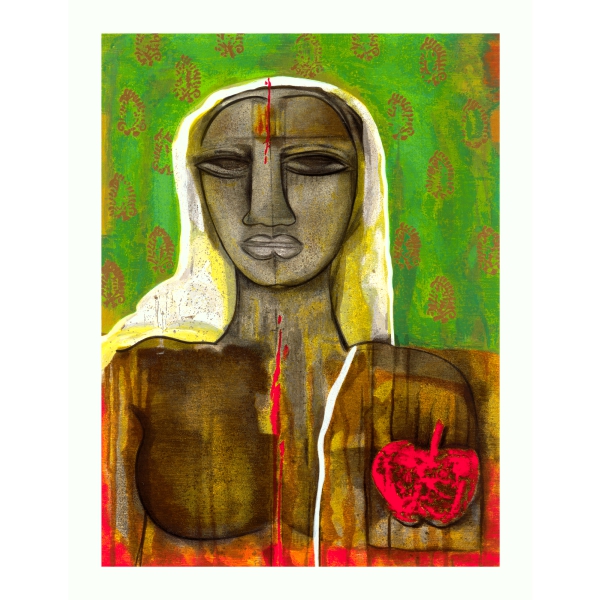
Vama, 28.25 x 22.5 in, Serigraph on Paper
Born In 1948 in Rongpur in Bangladesh, Rini Dhumal pursued BA in paintings and later on earned her MA in Printmaking from the Faculty of Fine Arts, Maharaja Sayajirao University, Vadodara. She then went to study under the famous printmaker Sir Stanley William Hayter at Atelier 17 in Paris. She also did her stint with famous printmaker Shri Krishna Reddy.
Dhumal was appointed as an associate professor in graphic arts and later professor and head of the department of painting in MSU, Vadodara. She has had many solo and group shows in India and abroad. Her works are in the prestigious collection of National Gallery of Modern Art, New Delhi, Bharat Bhavan, Bhopal, Bibliothèque nationale de France, Bronx Museum of the Arts, New York and Museum Of Modern Art, Baghdad to name a few. She passed away at the age of 73 in Vadodara, Gujarat in 2021. Her contribution to printmaking in Indian art will be remembered forever.
The Story
The woman with apple reminds us of several works that are found in European museums, which represents the symbolic Christian art. Western art has always been fascinated with the apple and a character as the central theme but when it comes to India, we have very few artworks that are based on this subject.
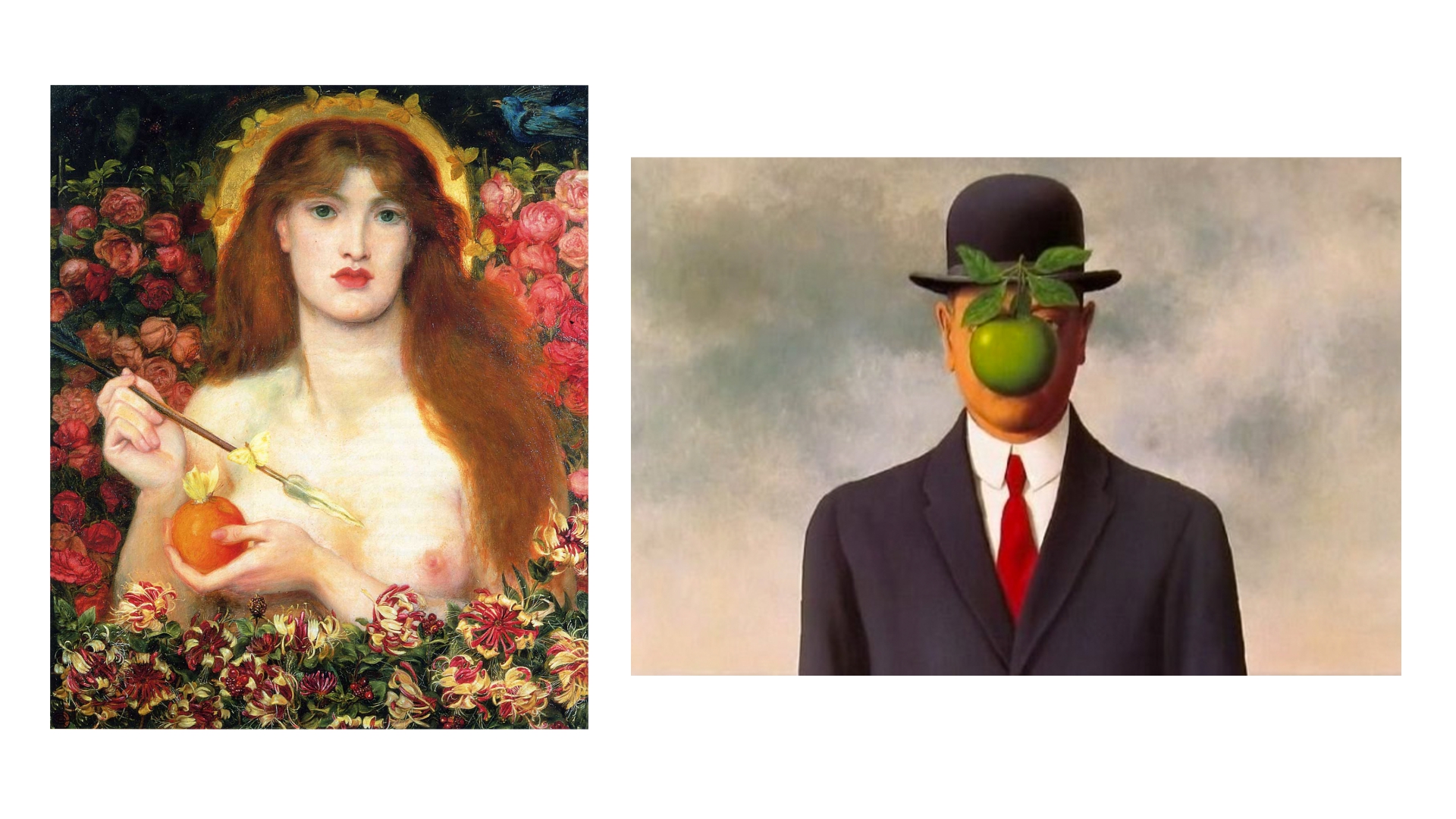
Venus Verticordia by Dante Rossetti, 1866 (Left, wikimedia) & The Son of Man by René Magritte, 1964 (Right, wikipedia)
The multi-layered central character in Dhumal’s artworks represents power with sensitivity. Her composition revolves around the character with symbolic vocabulary playing a vital role in depicting the various facets of a woman.
In this work, the first look suggests a strong depiction of womanhood but just like the layered tones, the subject too has various layers to it. A strong feminine image in black that represents Shakti is intertwined with a soft sensuality representing the Shringar rasa.
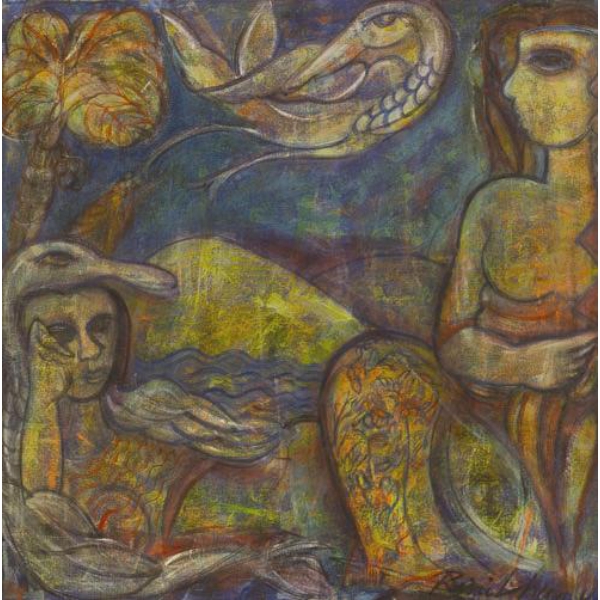
Rini Dhumal, 43 x 43 in., 1985, From The DRS Collection
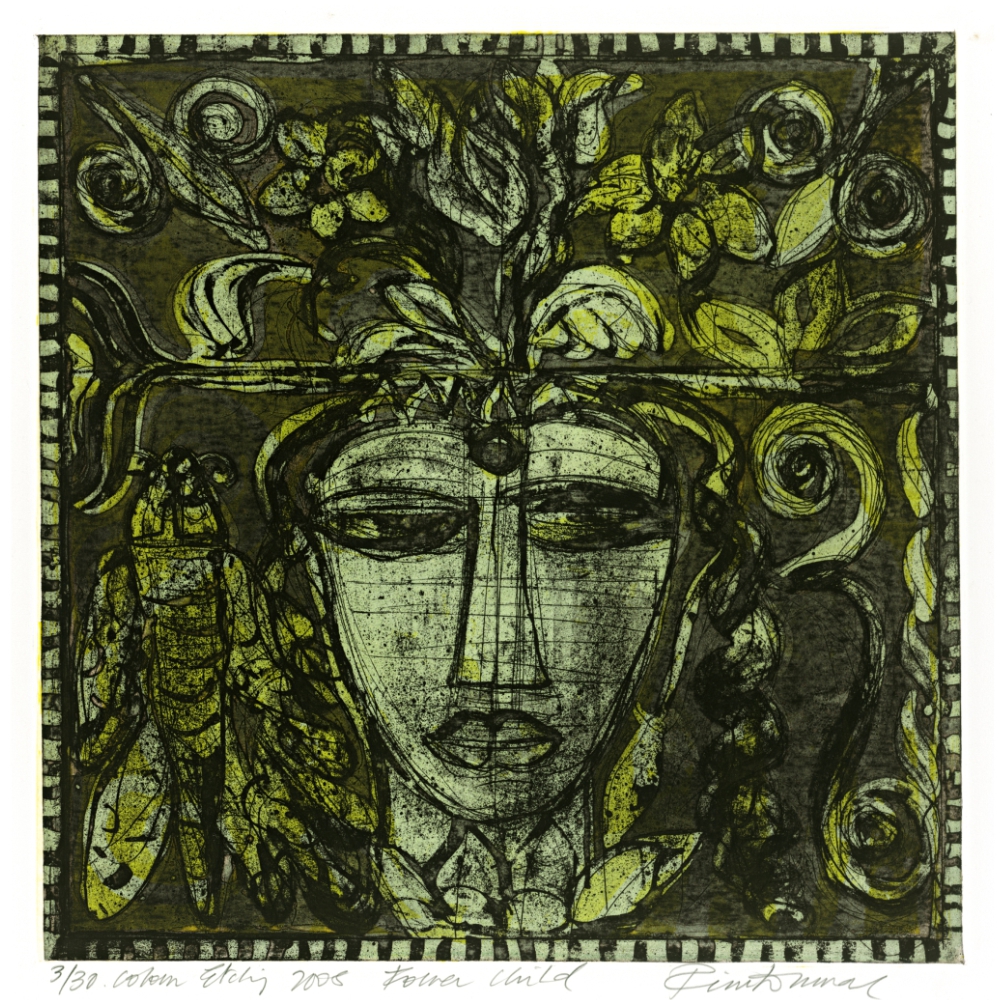
Rini Dhumal, 22 x 30 in., 2008, National Printmaking Portfolio
Artworks like this enhance the human sensibilities and drives us to ponder upon them. Some may say this kind of work connects to esoteric art. Let us understand the work by dividing it with elements in it. Different cultures, mythology, folklore, and communities have different stories to tell. A woman is considered the metaphor of love, beauty, sex, fortune, desire and triumph. Her many attributes including spiritual power and physical aspects are represented in the form of green.
Apple is the symbol of life. A pictogram of spirituality and peace, love and sexuality, sexual seduction. When the apple is in red, it symbolizes a female beauty. The apple is also associated with the female breast, which is quite evident in this work. The decorative golden wooden blocks represent the Shringar rasa. An analogy that has varied emotions from compassion to love and warmth. This work represents power and beauty having a strong feel of Indian sensibilities with universal emotions and appeal.

Smt. Rini Dhumal with her original artwork. (From the DRS Collection)
The Making
1. Process
At DRS Editions®, we have developed this printing style, which we call ‘conceptual printing’. Whereby we print according to the concept and the demand of the work. In pre-production itself, we decide which paper is to be used and the style of printing such complex works. Having said that, registration and handling of squeeze hold the ultimate importance.
We wanted that subtle look on the face of the woman but at the same time, that ‘command’ had to be shown through colours, effects and composition. Through our specialized layer-by-layer technique, we developed the base from light to dark, converting it from a soft to a strong image.
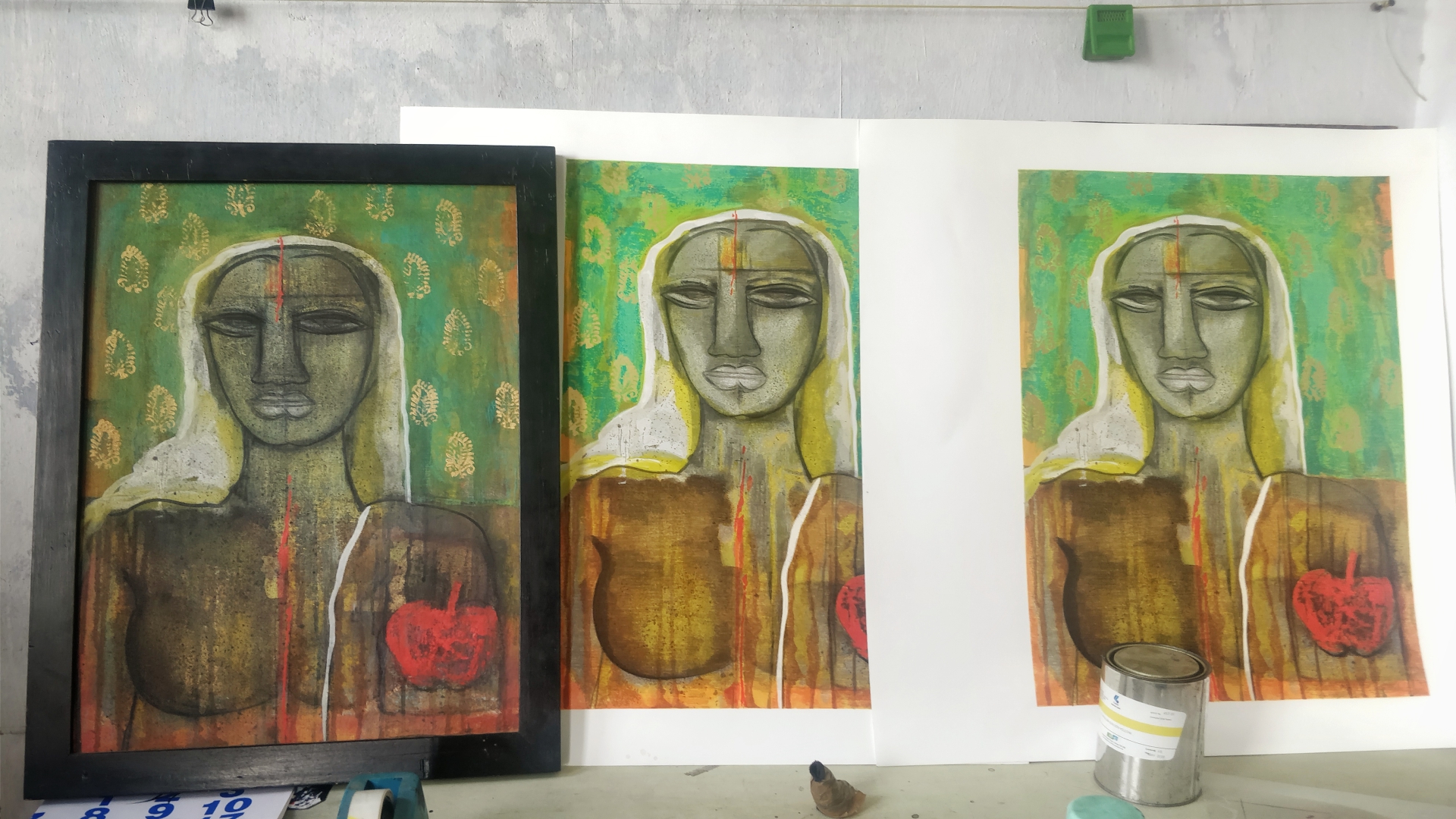
Conceptual Printing
2. Colours
One can literally feel the mix of acrylic and water colours through this printing process. Each inch of this serigraph has tones. Be it in the background with green, embossed gold wooden block, face with various greys, hair with whites and yellows, chest with several browns or red apple and the torso with reds. The colours in this work have their own value and play lyrically with each other. The transparency and clarity of each tone and colour are clearly visible and soothing to the eyes. The transition of each colour is also an interesting thing to note here.
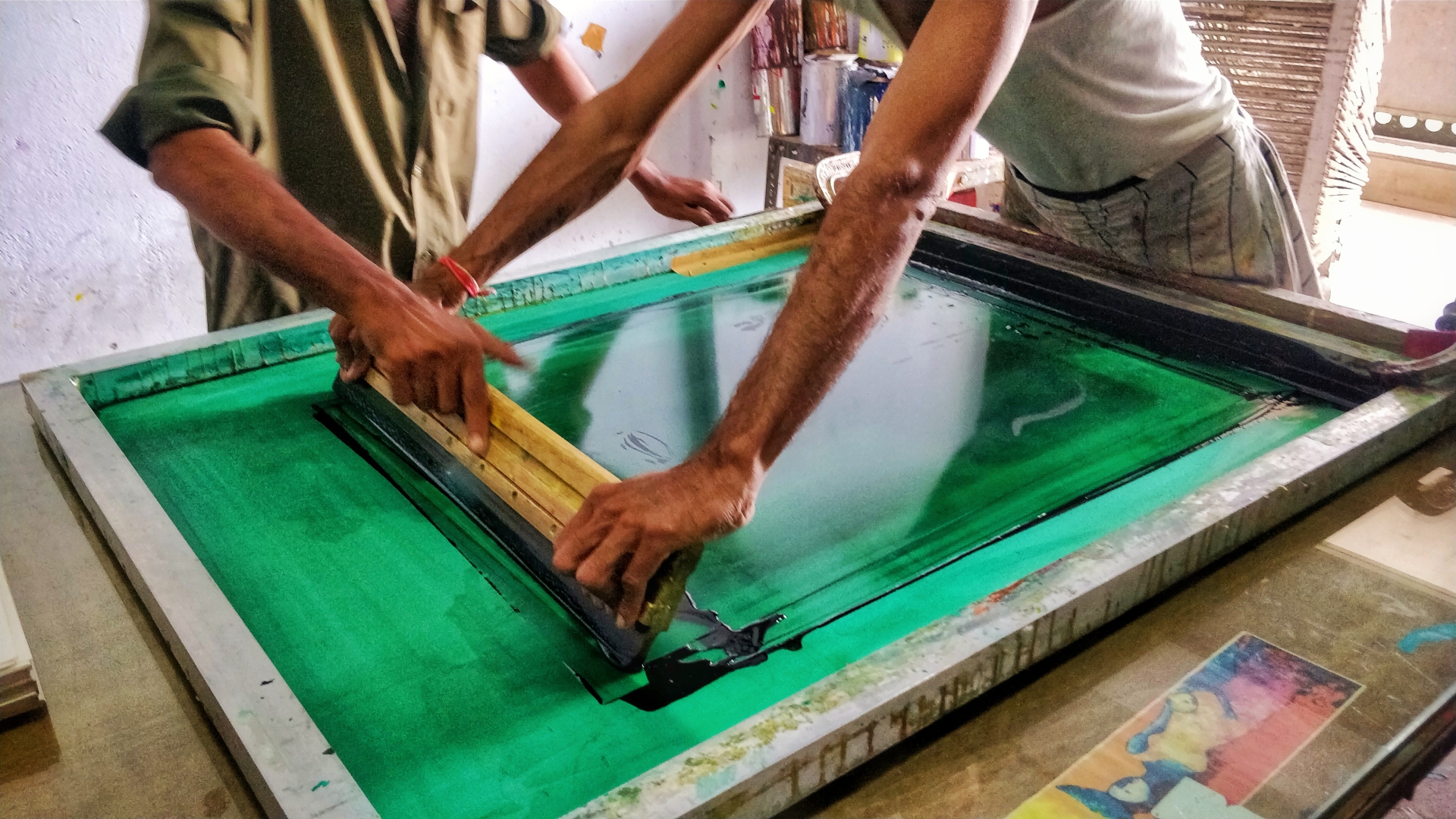
Colour Process
3. Registration
The perfect registration is what we would like to mention in this work. One can see different styles, thickness, broadness, brushed lines almost everywhere. We have tried to balance and maintain the sharp registration be it in her face, hair or chest. The tilak on her forehead was the last and riskiest part to work on after the entire serigraph was ready. The detailing of each line can be seen at the minutest level. The neat and sharp registration is one of the highlights of this work.
4. Complexity and Innovation
Brush strokes and medium. It was complex as well as with our innovation skills we tried to maintain both at one go. It is difficult to shift a serigraph from acrylic to a water colour medium. In that, to shift from water colour strokes to acrylic strokes makes it even more difficult when we go by the layer by layer process.
The thick and thin, flat and wavy brush strokes in hair, chest or be it the dots in the face from acrylics in the background to water colour effect in the chest. One can literally see the water coming down in this work. This is the beauty of this serigraph.
This work can be gifted to newly wedded, displayed in a bedroom or a symbol of power in the office. Understanding the value of a woman does not limit it to any particular room or purpose.
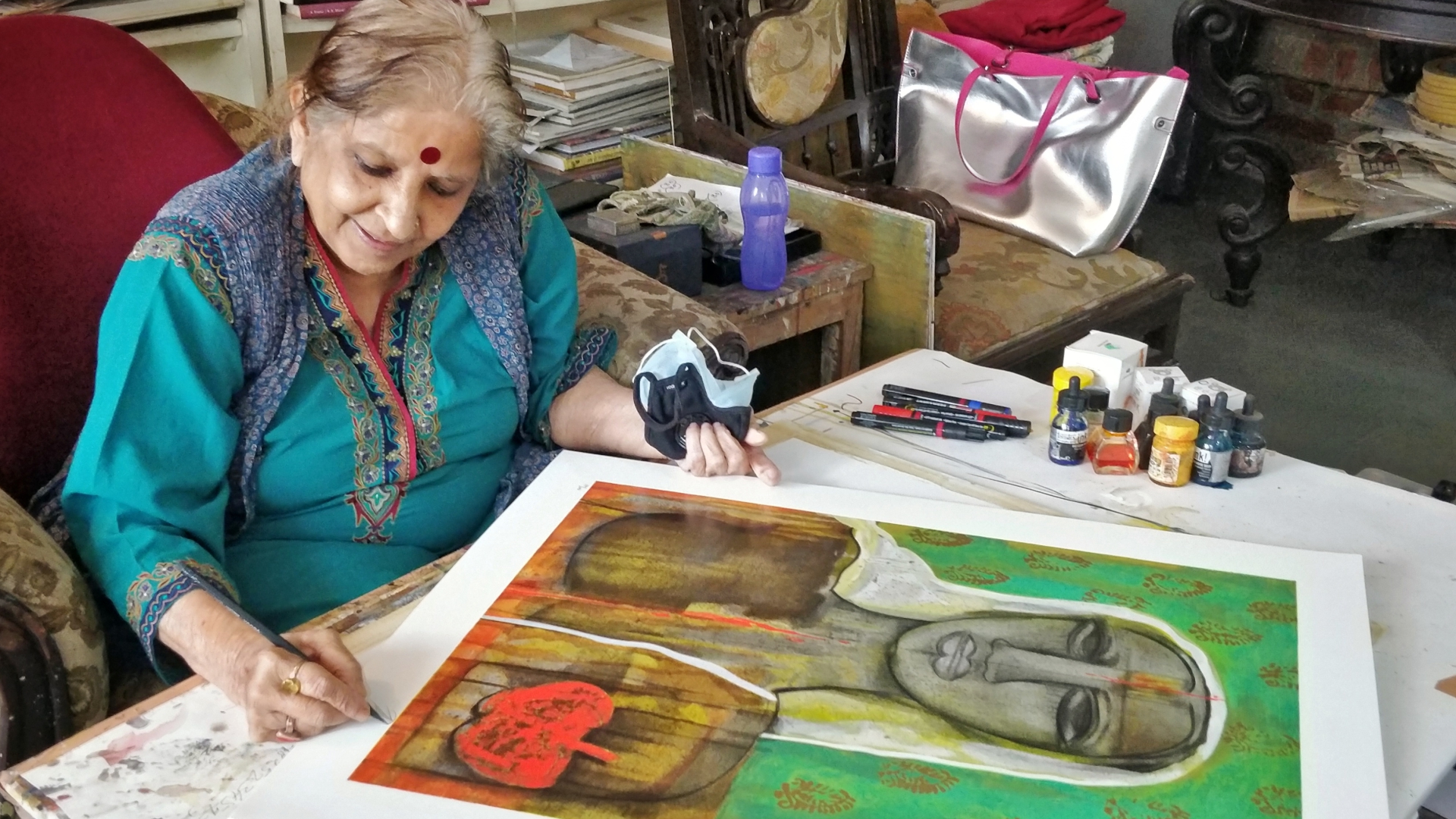
Rini Dhumal Signing Serigraph
5. Awards
This edition has won the prestigious Printweek India awards, Gold at the Screen Printing Association of India awards and the National Awards.
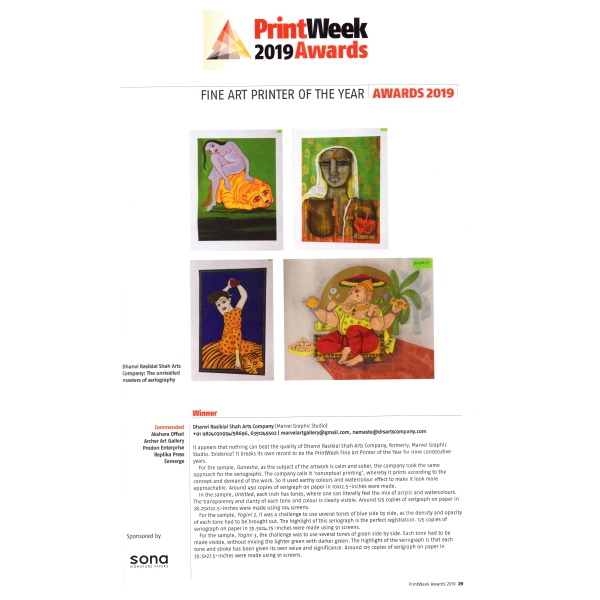
Printweek India Awards

Screen Printing Association of India Awards
6. Technical Details
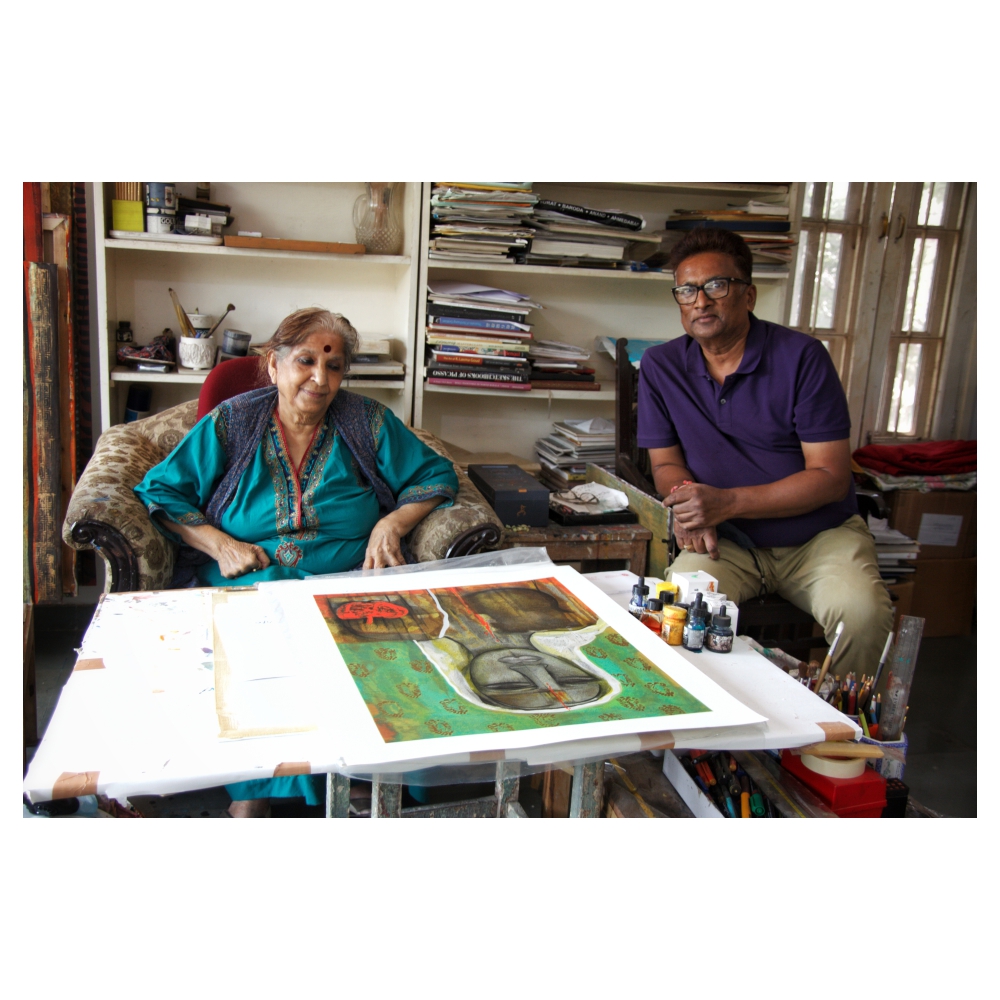
Dhanvi Rasiklal Shah and Rini Dhumal
Number of Colours / Screens : 104
Number of Days for Production : 75 days
Screens Used : 80, 100, 120, 140 (Nylon Bolting Cloth)
Paper Used : Bio Tap Board, Made in Spain, 300 GSM
Code : 702
Title : Vama
Medium : Serigraph on Paper
Size : 28.25 x 22.5 inches
Year : 2018
Edition : 125
Text and Narration: Chaitya Dhanvi Shah
Produced by DRS editions and created by India’s most awarded master serigrapher Shri Dhanvi Shah.


